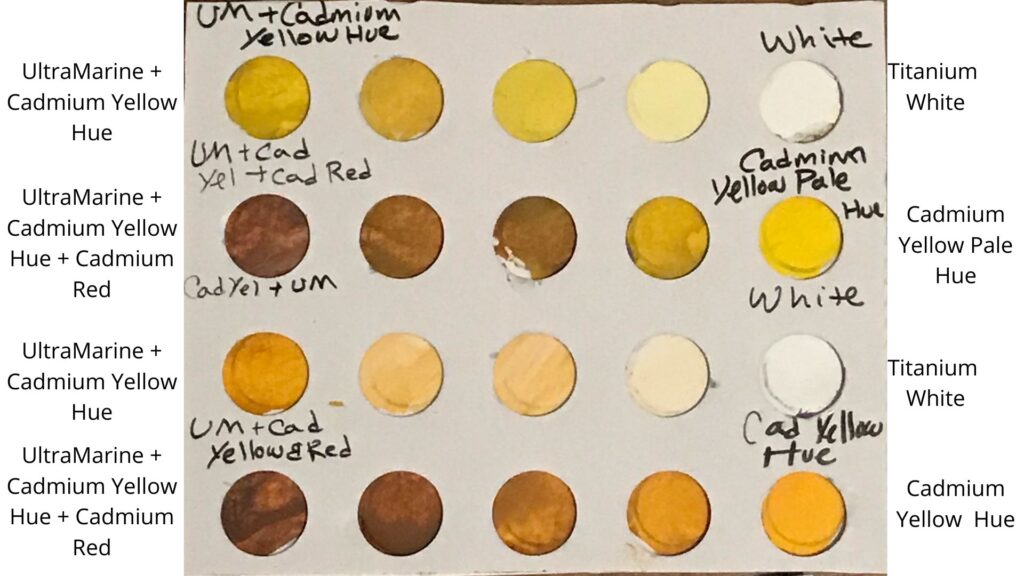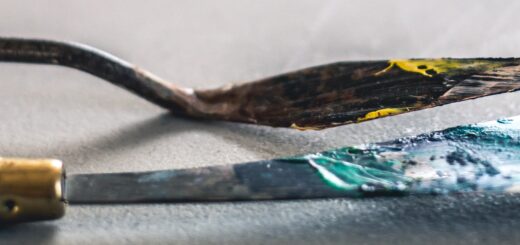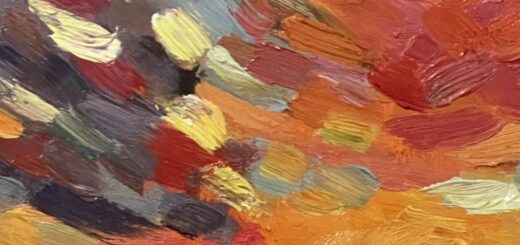Mixing Oil Paint Colors

Mixing Oil Paint colors begins with a small blob about the size of a nickel of each paint color, blue, red, and yellow. To start I recommend just working with the colors listed on the Palette Knife Oil Paint Supplies post here. A general rule is to section off a portion of the light color and move it to the center or clear space in the palette and then add a very small bit of the darker color to it. Mix in a circular motion staying in the smallest space possible with your palette knife.

The color maps below are tools I created for my art students to help them find or get as close as possible to the desired color. Each row has 5 dots showing the two starting colors and the combinations made. The far left and the far right dot on each row are the two hues being used to mix and the middle dot shows a 50/50 mix of the colors. Adding a little more of the right color gets the 4th dot and a little more of the left color gets the 2nd dot.
Mixing Primary Oil Paint Colors – Red, Yellow, and Blue
We start with two yellows, two reds, and two blues at the beginning. Two of each, because one will be a warmer hue and the other, will be cooler.
More about warm and cool colors and how to mix them can be found in this excellent article on the Golden Artist Colors, Inc. site.
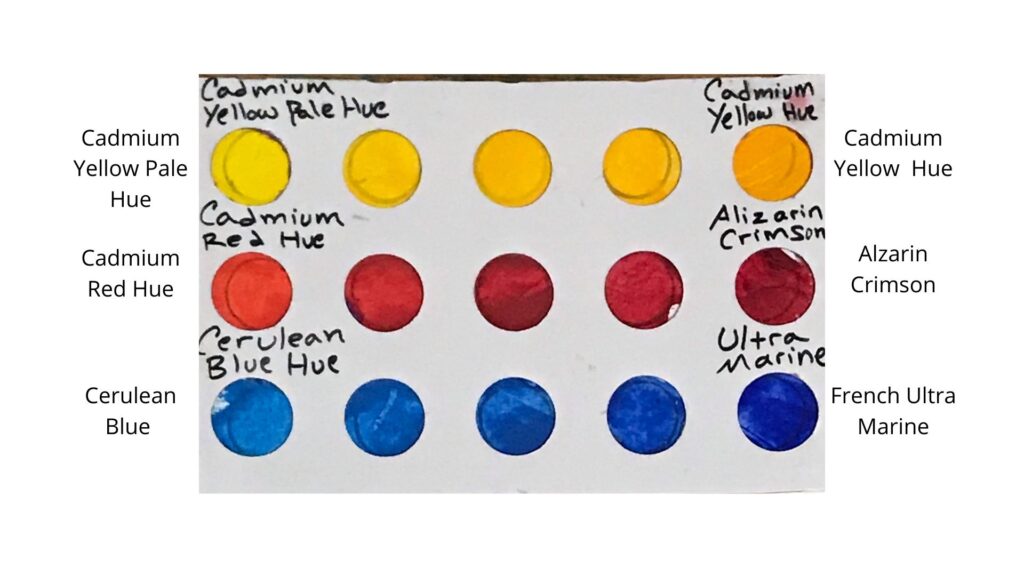
Mixing Green Oil Paint Colors
Cadmium Yellow Hue is a warmer Yellow and Cadmium Yellow Pale Hue is cooler. The warmer yellow leans more toward red in the color wheel and therefore makes either a more olive green or forest green when mixed with the blues. The Cadmium Yellow Pale Hue is cooler, and when mixed with the blues, makes a brighter more vivid green like spring green.
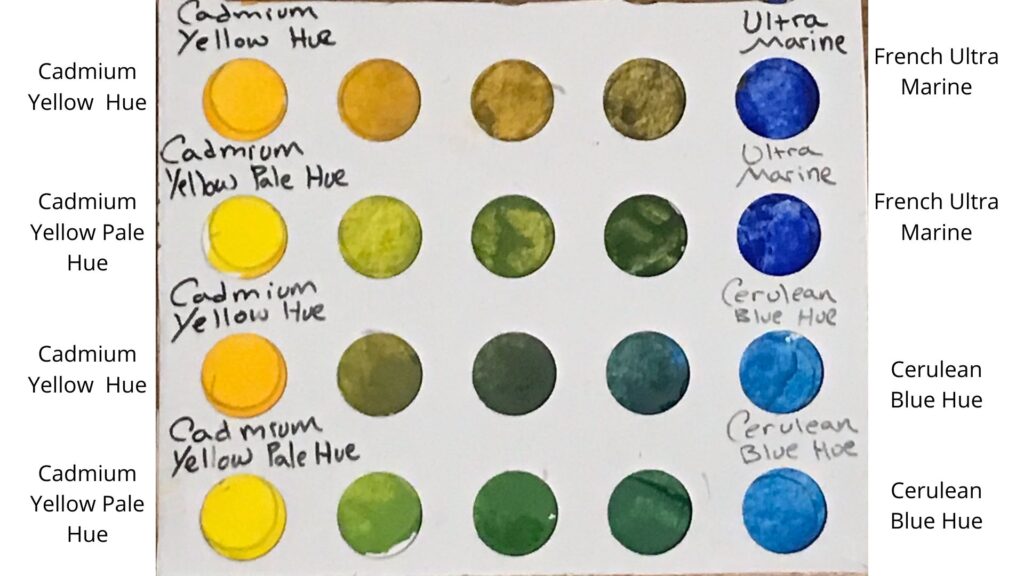
Mixing Orange Oil Paint Colors
There are two reds here. The warmer red is Cadmium Red Hue because it leans more toward orange and when mixed with the yellow, makes a bright hot orange. The cooler red is Alzarin Crimson and it leans toward blue in the color wheel. It is going to make duller oranges more like rust for that reason.
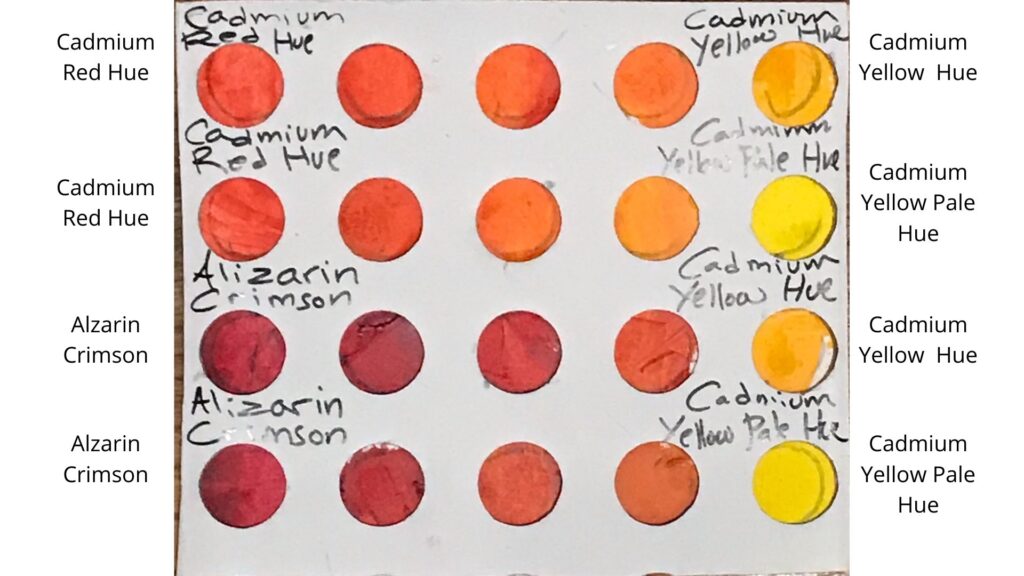
Mixing Purple Oil Paint Colors
This is when Alizarin Crimson gets to really show off. Since it already is a cool red, it makes vivid bright purples when mixed with the blues. The warmer red, Cadmium Red Hue makes more reddish purples.
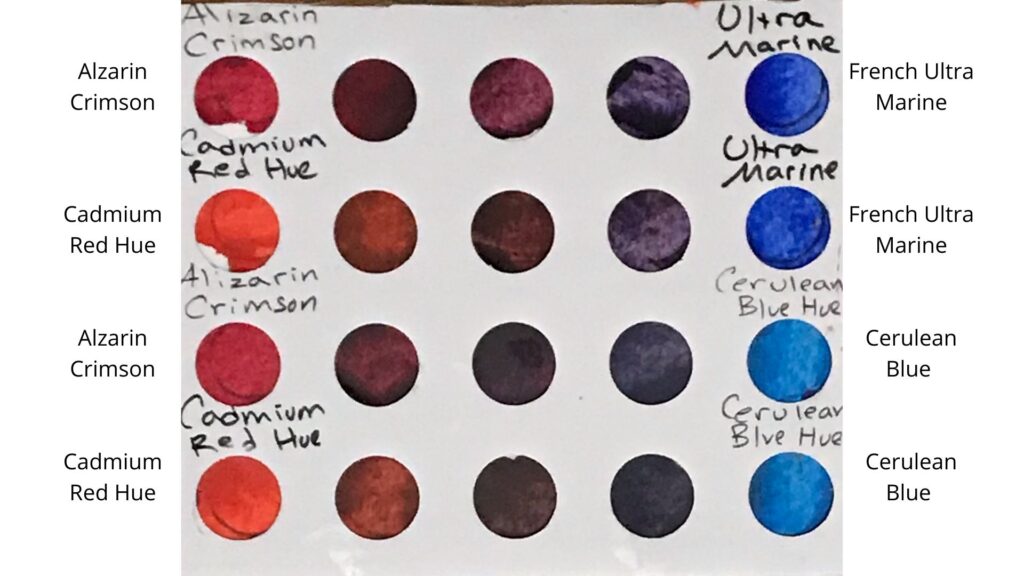
Mixing White
Mixing a color with white will lighten it. A big mistake beginning painters make is starting with a dark color first and then adding the white in. This will waste a lot of paint. Instead, add the amount you need of white on the palette first and take a very small amount of pigment, just enough to fit on the end of a toothpick, and mix it in. You can always make it darker if needed, but once it is too dark, it is hard to add enough white to make it lighter.
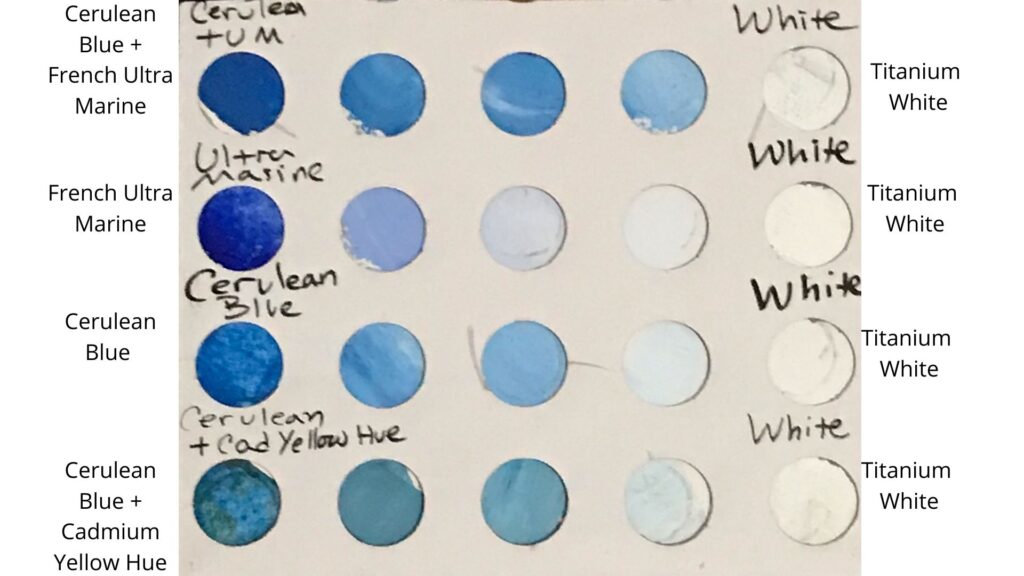
Mixing Greys
From the Alizarin Crimson and Cerulean blue mixture above which was made with a cool red and a cool blue, I added a warm blue, French Ultramarine. Mixing that with white made some beautiful greys with a purple tint. Starting with Black and white made more bluish greys.
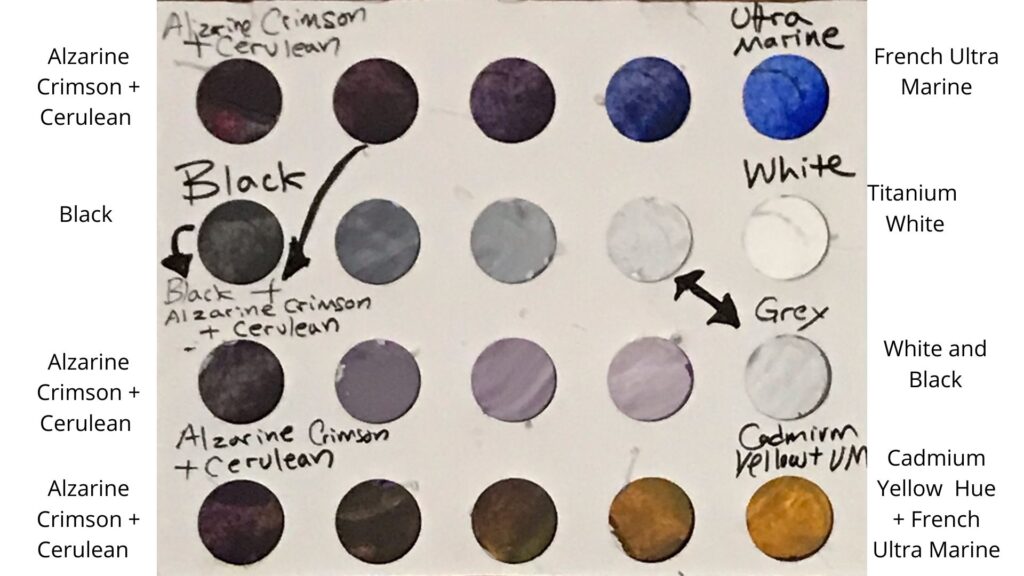
Mixing Skin Tones and Browns
Starting with colors already mixed and adding cadmium yellow pale hue or white produced the shades below.
